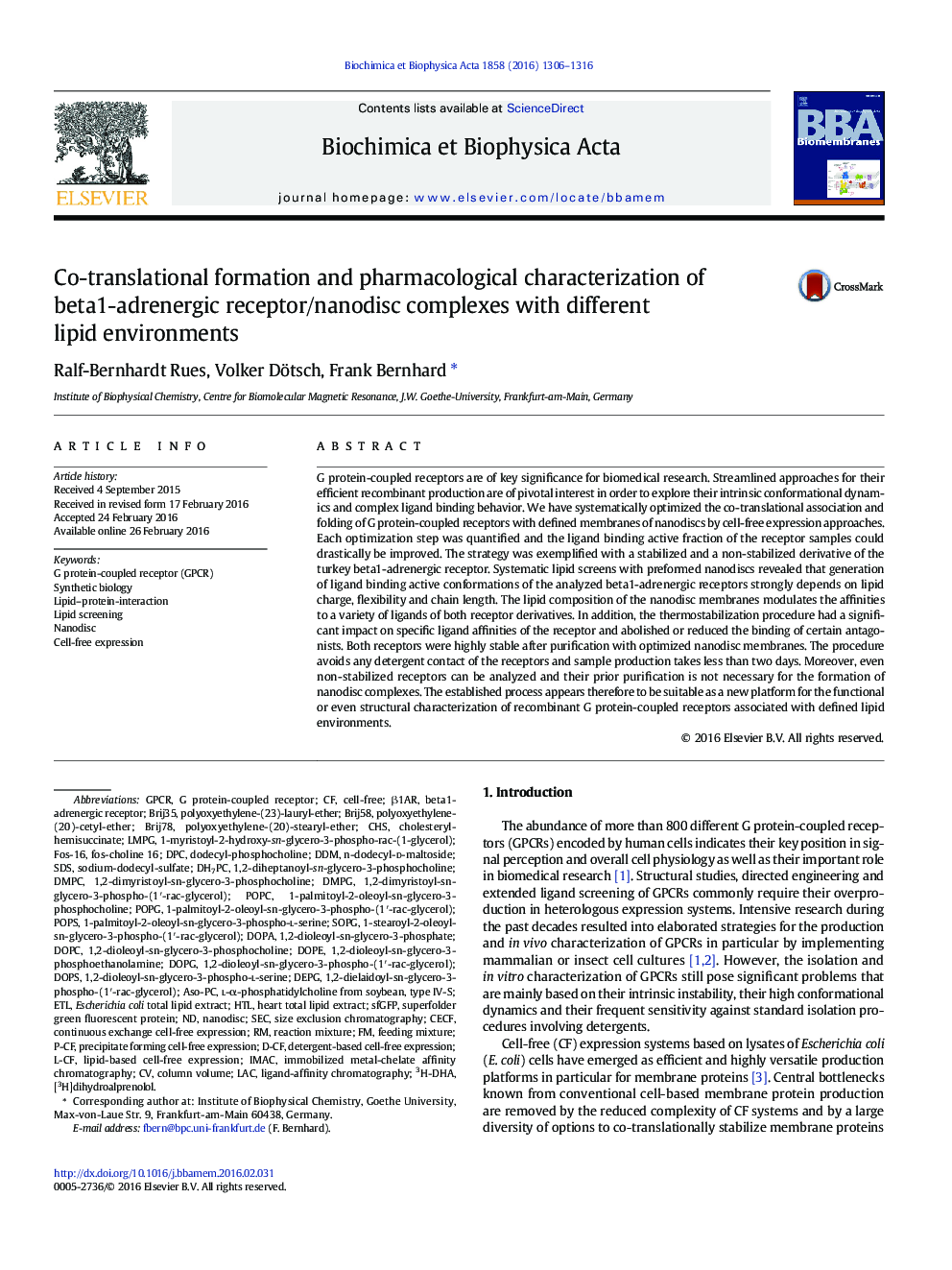| کد مقاله | کد نشریه | سال انتشار | مقاله انگلیسی | نسخه تمام متن |
|---|---|---|---|---|
| 1943980 | 1053169 | 2016 | 11 صفحه PDF | دانلود رایگان |
• Combined cell-free expression and nanodisc technologies as evaluation platform for lipid specificities of membrane proteins.
• Detergent sensitive GPCRs can be synthesized for in vitro studies by the co-translational association with nanodiscs.
• Screening of hydrophobic folding environments improves the functional folding of GPCR samples.
• Ligand affinities of the beta1-adrenergic receptor are modulated by membrane lipid compositions.
• Pharmacology with differentially engineered GPCR/nanodisc complexes enables the localization of ligand binding.
G protein-coupled receptors are of key significance for biomedical research. Streamlined approaches for their efficient recombinant production are of pivotal interest in order to explore their intrinsic conformational dynamics and complex ligand binding behavior. We have systematically optimized the co-translational association and folding of G protein-coupled receptors with defined membranes of nanodiscs by cell-free expression approaches. Each optimization step was quantified and the ligand binding active fraction of the receptor samples could drastically be improved. The strategy was exemplified with a stabilized and a non-stabilized derivative of the turkey beta1-adrenergic receptor. Systematic lipid screens with preformed nanodiscs revealed that generation of ligand binding active conformations of the analyzed beta1-adrenergic receptors strongly depends on lipid charge, flexibility and chain length. The lipid composition of the nanodisc membranes modulates the affinities to a variety of ligands of both receptor derivatives. In addition, the thermostabilization procedure had a significant impact on specific ligand affinities of the receptor and abolished or reduced the binding of certain antagonists. Both receptors were highly stable after purification with optimized nanodisc membranes. The procedure avoids any detergent contact of the receptors and sample production takes less than two days. Moreover, even non-stabilized receptors can be analyzed and their prior purification is not necessary for the formation of nanodisc complexes. The established process appears therefore to be suitable as a new platform for the functional or even structural characterization of recombinant G protein-coupled receptors associated with defined lipid environments.
Figure optionsDownload high-quality image (268 K)Download as PowerPoint slide
Journal: Biochimica et Biophysica Acta (BBA) - Biomembranes - Volume 1858, Issue 6, June 2016, Pages 1306–1316
